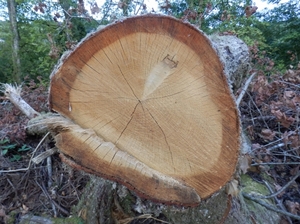Most construction accident lawsuits stem from injuries sustained by on-site workers.

However, if a construction, demolition or renovation site is not properly secured or if outsiders aren’t given proper warning to keep a certain distance, the public in general may be put at risk of serious injury or even death.
That’s what is alleged to have occurred in the case of McDermott v. State, recently weighed by the Connecticut Supreme Court.
Fort Lauderdale wrongful death attorneys recognize this case was complex for the fact that not only were the industry standards at issue, there were alleged elements of comparative fault by the decedent victim as well as questions of legal liability by defendant, a government agency.
While jurors at trial found in favor of plaintiff, widow of decedent, appellate court reversed with directions to enter a favorable judgment to defense. But then the state supreme court reversed in part, finding the standard used by the court in its determination of liability and damages was incorrect, therefore warranting a totally new trial.
According to court records, the tragic accident started with a tree removal job. Employees with the state’s department of transportation were dispatched to remove a 55-foot sugar maple tree located on a grass strip in between the street and a sidewalk. The 6-member crew arrived, set up two traffic cones on the sidewalk. One was 85 feet south of the tree and another 100 feet north of the tree. Those cones remained throughout the duration of the job.
The crew started by removing all the limbs and then started engaging in a process called “chunking.” This is where the crew takes the rest of the tree down in “chunks” until it’s down to the stump.
It was around 1:30 p.m. when a pedestrian approached. He had no connection to the work removal operation. He walked about 30 feet past the southern cone toward the work site. He then stood next to two work crew members as others continued to work on the “chunking.”
He watched as a 10-foot chunk of the tree was dropped from a bucket truck and landed generally where the crew intended. The problem was as it landed, it struck a limb already on the ground. Described as “log size,” the limb went flying into the air. It struck the decedent in the forehead. He fell backward on the sidewalk and hit his head on the cement. He was later pronounced dead at the scene.
Following a seven-day trial, trial court found defendant (the state) liable to plaintiff for wrongful death and loss of consortium, and awarded her $1.3 million in damages. The court noted defendant voluntarily assumed a duty of care to decedent when he was not stopped from entering the work zone.
Defense appealed and appeals court reversed, finding defendant owed no duty to remove decedent from the work zone because he crossed the cone barrier. Thus, decedent assumed a greater duty of care for his own safety.
However, state supreme court reversed. The trial court did not make a requisite factual finding necessary to determine whether defendant voluntarily assumed a greater duty than that which was legally required. Industry standards require barrier cones to be placed at least 55 feet from the work zone. This cone was placed at 85 feet. However, plaintiff was standing slightly closer than 55 feet when the accident happened. Therefore, the court needs to make a determination about relevant duty of care.
Call Fort Lauderdale Injury Attorney Richard Ansara at (954) 761-4011. Serving Broward, Miami-Dade and Palm Beach counties.
Additional Resources:
McDermott v. State, April 28, 2015, Connecticut Supreme Court
More Blog Entries:
U.S. Supreme Court to Rule on Accident Insurance Reimbursement Issue, April 20, 2015, Fort Lauderdale Wrongful Death Lawyer Blog
 Broward Injury Lawyer Blog
Broward Injury Lawyer Blog



